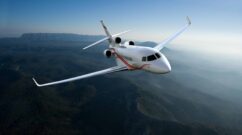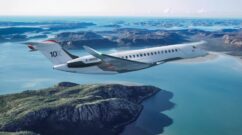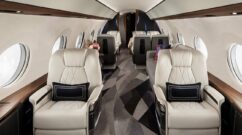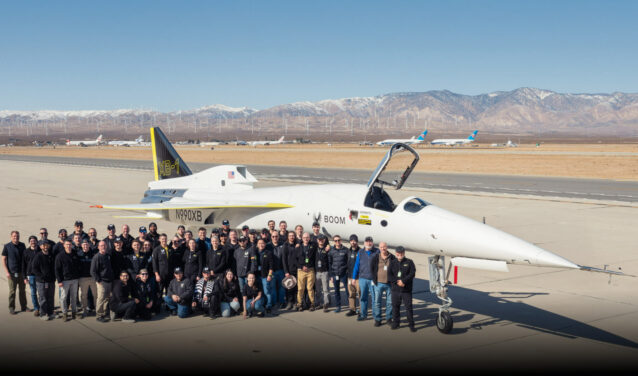On January 28, 2025, Boom Supersonic ‘s American XB-1 supersonic demonstrator aircraft broke the sound barrier, reaching Mach 1.122 (approx. 1,210 km/h) at an altitude of 35,290 feet (approx. 10,750 m). The flight marked a major milestone in civil aviation, the first independent civil supersonic flight since Concorde.
“You had to be a little crazy”: Concorde, a supersonic flight legend of the past. Introduction.
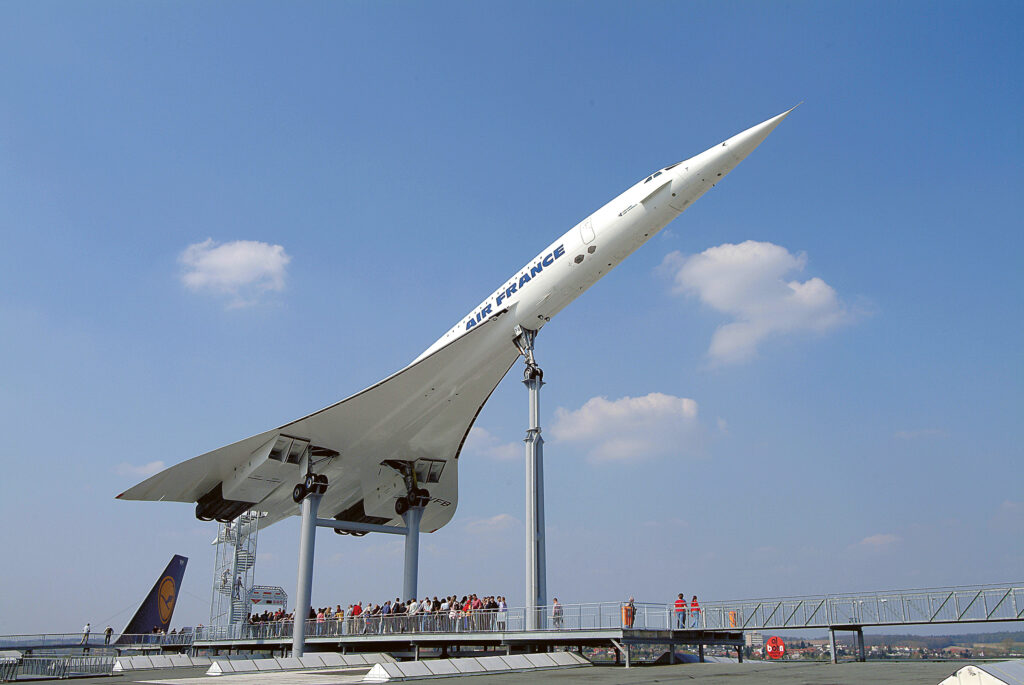
Concorde embodied an aeronautical revolution with its Mach 2 flights, making it possible to fly from London to Washington in just 3 hours.
However, this feat came at a price: the supersonic bang, an intense blast of sound, disturbing the serenity of the regions overflown, causing nuisance and discomfort to the local population. This noise problem led to a ban on supersonic flights over inhabited areas, precipitating the end of the Concorde program in 2003.
Today, however, a major innovation is transforming this landscape. On January 28, 2025, the American company Boom Supersonic achieved an exceptional breakthrough with its prototype, the XB-1, elegantly nicknamed “Baby Boom”. It repeatedly broke the sound barrier without emitting the slightest audible noise from the ground. How did this happen?
XB-1 and the “Boomless Cruise” innovation
To fully grasp this breakthrough, we first need to understand the concept of a supersonic bang.
Visualize a swimming pool: if you move your hand slowly, the water flows gently around it.
But if you accelerate suddenly, you generate a powerful wave. The principle is the same in the air: at moderate speed, a plane generates sound waves dispersed in a circle around the plane; above the speed of sound, the plane catches up with and then overtakes these waves, which cannot disperse smoothly, and they then form a cone at the back of the plane. This creates a shock wave. The air pressure is suddenly altered, giving rise to the characteristic “bang”. This noise persists throughout the aircraft’s journey, if it is flying faster than the speed of sound, and not just when it breaks the sound barrier.
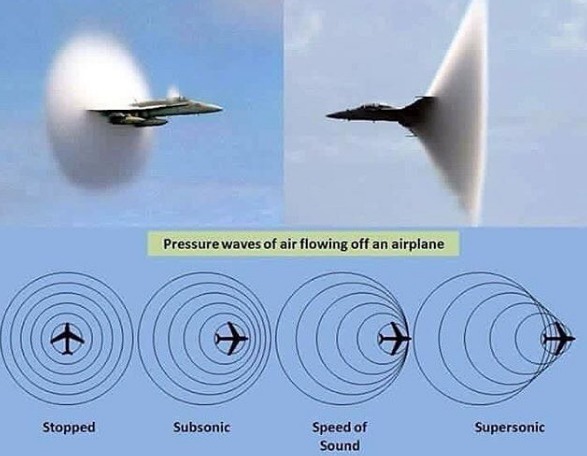
The XB-1 avoids this phenomenon by a sophisticated method known as “Mach cutoff”. By flying at higher altitudes, where the air is less dense and sound propagates differently, the bang waves are more easily dispersed, long before they can hit the ground. So it’s not just a question of designing silent aircraft, but aircraft capable of flying at altitudes where their passage becomes imperceptible to those who remain on the ground.
Although some military aircraft already use this technology, this is an absolute first for commercial civil aviation.
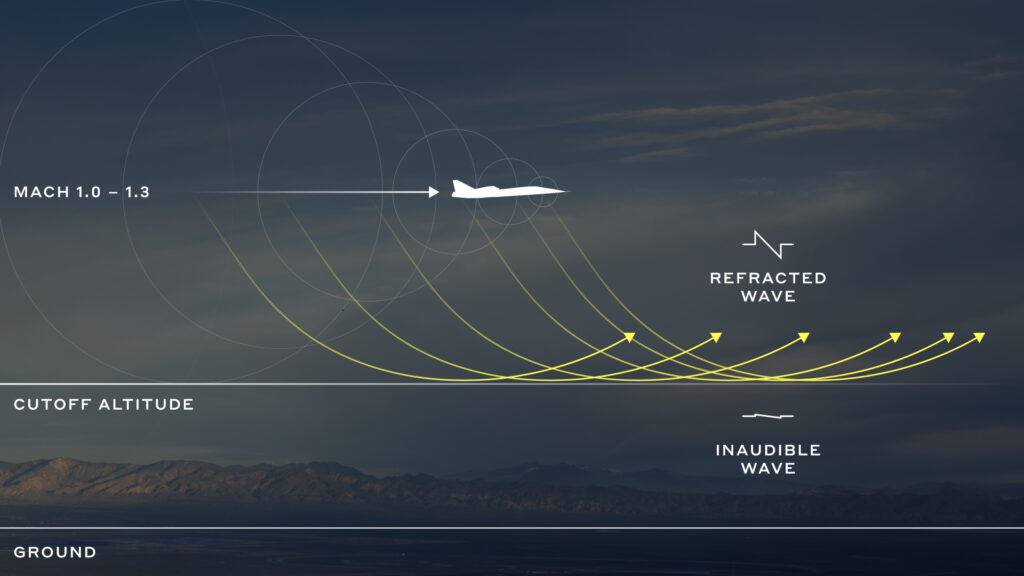
Key figures for the XB-1
- Maximum Mach reached: 1.18 (approx. 1,240 km/h)
- Maximum altitude: 36,500 ft (approx. 11,100 m)
- Total number of flights: 13 (March 2024 to February 2025)
- Number of supersonic flights: 2
- Fuselage length: 21 metres (68 feet)
- Wingspan: 5.2 metres
- Engines: 3 GE J85-15 engines
- Materials: Carbon composites
Tests and supersonic silence
The XB-1‘s second supersonic flight, on February 10, 2025, enabled additional tests to be carried out, including aerodynamic and high-speed vibration (flutter) measurements. Thanks to the innovative “boomless cruise” technology, no noise pollution was detected on the ground, demonstrating the possibility of silent supersonic commercial flights.

“The supersonic flight of the XB-1 proves that commercial supersonic flight technology is now ready. A small group of talented and determined engineers has achieved what once required state intervention and billions of dollars. Our next step is to adapt the XB-1’s proven technology to the Overture supersonic airliner. Our ultimate goal is to make the benefits of supersonic flight available to everyone.”
– Blake Scholl, CEO of Boom Supersonic
Evolving regulatory framework
On June 6, 2025, U.S. President Donald Trump signed an executive order asking the FAA (Federal Aviation Administration) to lift the ban on supersonic flights over land within 180 days, provided they generate no audible bangs on the ground. This decree follows the introduction of the Supersonic Aviation Modernization Act in May 2025, backed by a bipartisan group of US legislators, designed to facilitate innovation and assert American leadership in the civil aviation of the future.

The Overture, commercial successor to the XB-1
The XB-1 demonstrator paves the way for the arrival of the Overture supersonic commercial aircraft. Scheduled to enter service around 2029-2030, the Overture will be able to carry between 64 and 80 passengers, at a speed of Mach 1.7 (around 2,220 km/h), with a range close to 7,870 km.
Buoyed by the technical success of the XB-1, Boom Supersonic now aims to market its flagship aircraft, theOverture, from 2029. This sophisticated aircraft will be able to accommodate between 64 and 80 passengers, cruising at a speed of Mach 1.7 (around 2,220 km/h, almost twice as fast as current commercial aircraft). With a range approaching 7,870 km, journeys such as London-Dubai could be completed in just 4 hours.
This exceptional aeronautical innovation naturally targets a demanding clientele, sensitive to discreet luxury and optimum efficiency. Tickets will be offered at a higher price than conventional aircraft, aimed primarily at business travellers and private individuals who prefer speed, comfort and exclusivity.
The Overture will be powered by in-house Symphony engines, developed by Boom Supersonic in North Carolina, and will be able to run entirely on Sustainable Aviation Fuel (SAF).
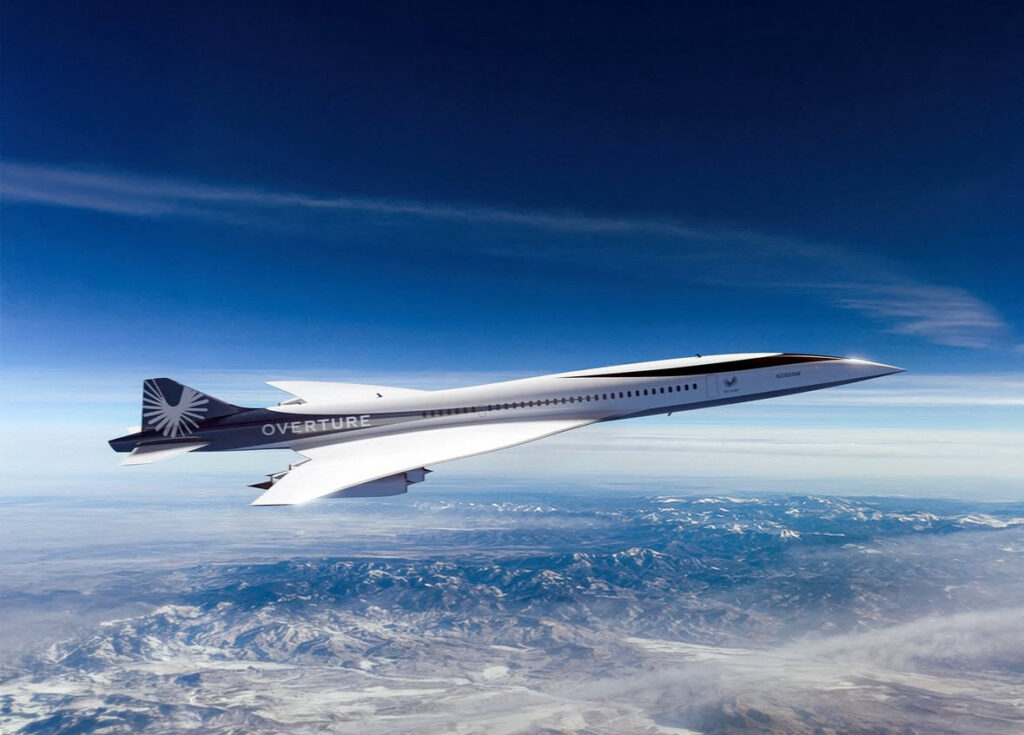
Practical implications for business
The return of supersonic transport promises to profoundly transform international business travel:
- Significant time savings: A flight from Paris to Tokyo could be cut to just 6 hours.
- Premium positioning: Pricing comparable to enhanced business class.
- Sustainable commitment: Flights using up to 100% sustainable fuels with integrated carbon offsetting.
This will enable companies to optimize time management, improve productivity and strengthen their environmental commitment.



Conclusion: towards a new supersonic era?
With the success of the XB-1, Boom Supersonic is positioning itself as a leader in the revival of civil supersonic flight. The near future with theOverture could revolutionize business travel, offering executives a tangible and efficient solution for their rapid international travel.
Next up, the next tests and certification stages expected by 2027, before the first commercial flights estimated around 2029.
Ready to experience this new supersonic era?
A question? Contact our airline experts

Isabelle CLERC
CEO AEROAFFAIRES

François-Xavier CLERC
Founder AEROAFFAIRES
Our airline experts remain at your disposal to help you at every stage of your reservation.

